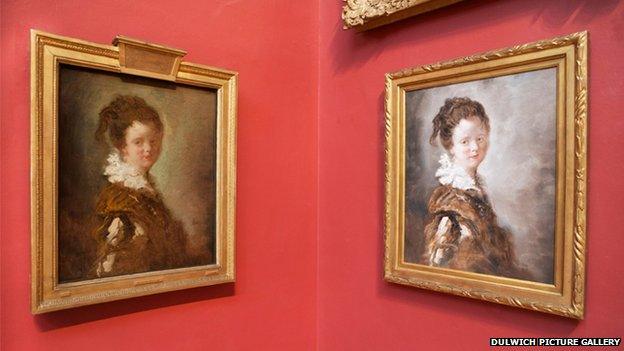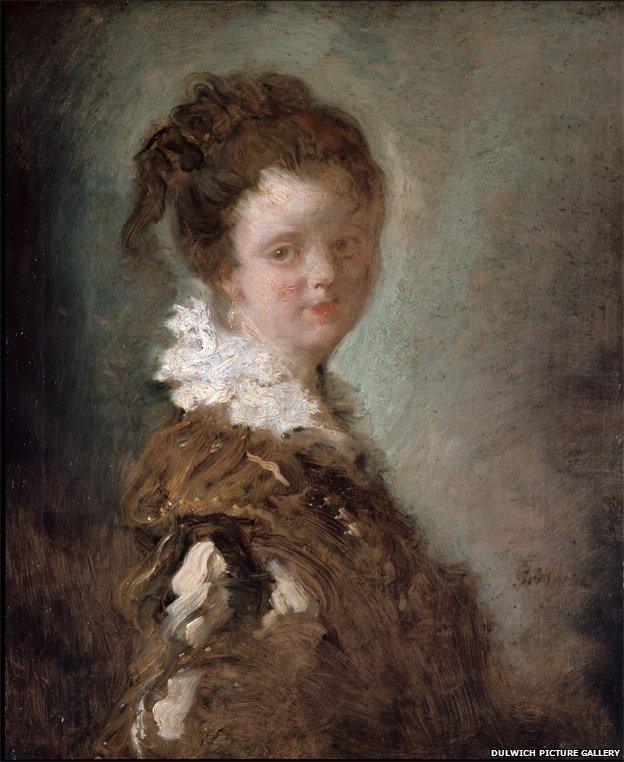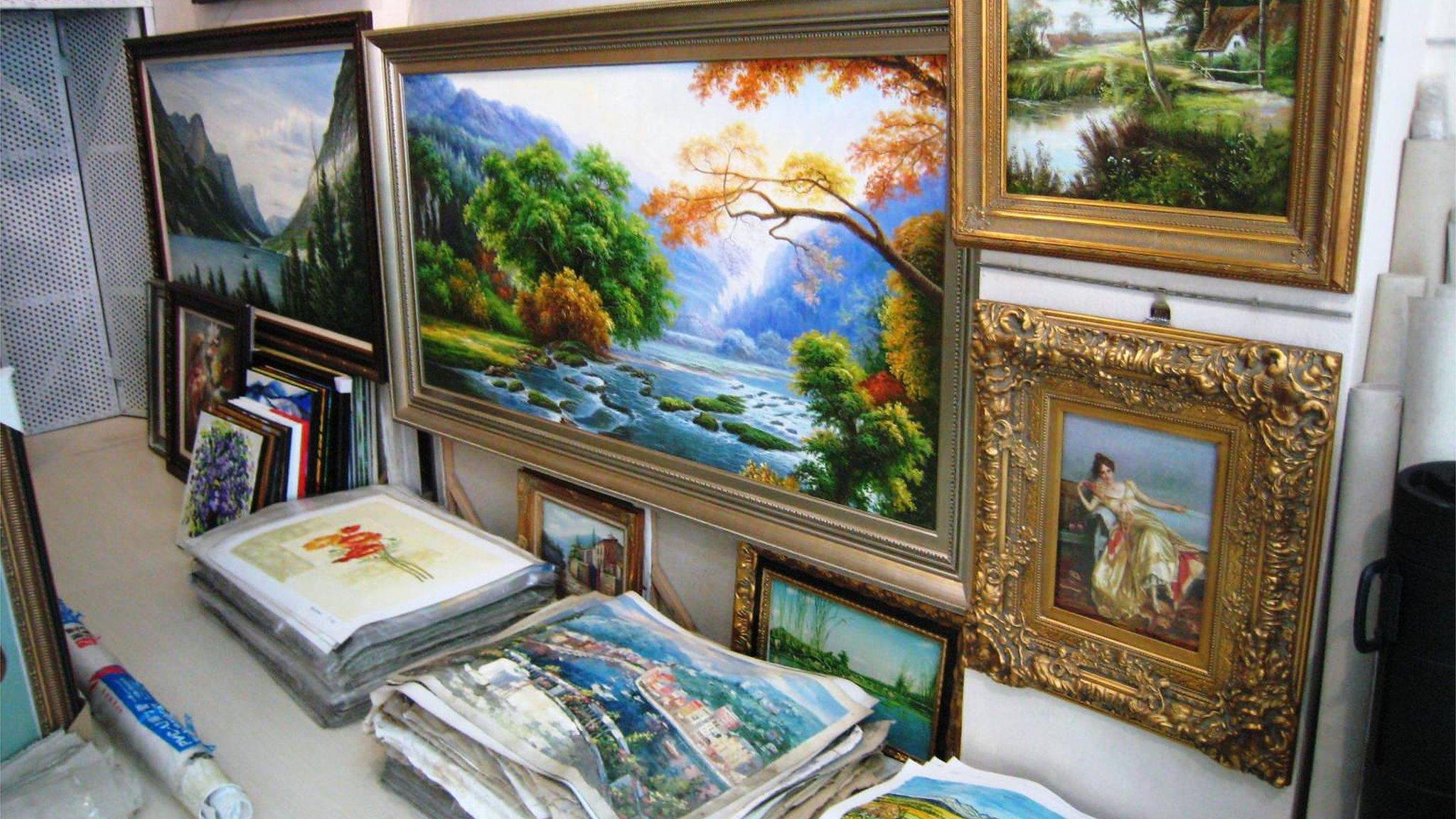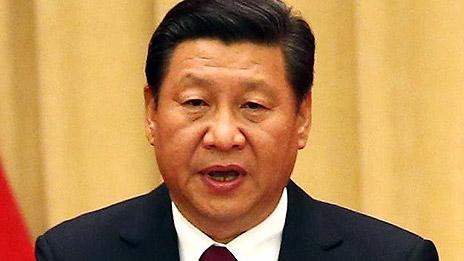Dulwich Picture Gallery's 'fake' painting revealed
- Published

The replica and the original of Fragonard's Young Woman will now hang side by side
The identity of a replica painting which was hung at Dulwich Picture Gallery as part of a "spot-the-fake" challenge has been revealed.
Since February, Jean-Honore Fragonard's 18th Century work Young Woman has been replaced by a $120 (£70) counterfeit, produced in China.
The public was asked whether it could identify the fake amongst the permanent collection of 270 Old Master paintings.
Nearly 3,000 visitors cast a vote, but only 10% guessed correctly.
The original will be put back in its frame on Tuesday and hung beside the replica, allowing people to compare the stylistic and material differences between the two.
Conceptual artist Doug Fishbone came up with the idea, selecting the original work and commissioning the copy from one of China's numerous exporters of handmade oil paintings.
Will Gompertz reports: Can a former art forger spot a fake in an art gallery?
The painting was made by the Meishing Oil Painting Manufacture Company, where 150 artists, many of them art students, make copies of well-known paintings - including Picasso, Matisse, Van Gogh and Monet - to order for clients across the world.
According to its website, external, the company "can reproduce various kinds of famous oil paintings in the world in enormous quantities such as impressionist, modern painting, scenery, seascape, still life, animal, pop art, abstract, classical, group paintings, reproduction oil painting, commerce oil painting, custom portrait oil painting and so on".
Strictly speaking, the works are not fakes, since the studio is careful to change the size slightly from the originals.
Attendance boost
Dulwich Picture Gallery was the first purpose-built public art gallery in England when it opened its doors in the south London suburb in 1811.
Chief curator Dr Xavier Bray said attendance had quadrupled during the last two months.
"Never before have I seen so many people actively looking at each painting," he said.
"Now Fragonard's portrait of a young woman has returned to the gallery walls and hangs alongside its modern companion. The visual exercise of comparing and contrasting will demonstrate how exciting it is to engage with an original work of art, but also marvel at the skill of a modern copyist working 5,000 miles away."

The portrait is one of Fragonard's Fantasy Figures, a series of quickly executed studies intended to showcase his skill with oil paint

Chief curator Dr Xavier Bray said examining the "daubs and dabs that define the intricate lace" would help visitors identify the fake
Speaking at the launch of the project, Fishbone said his experiment would raise questions about the nature and importance of an original work versus a replica.
"In the West, we see replicas as very problematic, as 'fakes' perhaps, whereas in China the notion of copying cultural artefacts is seen totally differently," he said.
Having seen the project through, he called visitors' responses "intriguing and eye-opening".
"I'm no conspiracy theorist, but if it leaves viewers with a healthy suspicion that what is presented to them may not be what it seems, and that our experiences can be manipulated in ways we are unaware of or cannot detect, it will have done something quite interesting."
- Published27 October 2012

- Published2 December 2010
- Published16 October 2014
